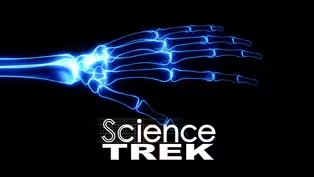
Light and Color: Color Your Behavior
Clip: Special | 1m 4sVideo has Closed Captions
When can babies first see color?
Can color affect the way we feel? Scientists say yes. Learn why McDonald’s uses yellow in its packaging and why stop signs are red.
Problems playing video? | Closed Captioning Feedback
Problems playing video? | Closed Captioning Feedback
Science Trek is a local public television program presented by IdahoPTV
Major Funding by the Laura Moore Cunningham Foundation and the Idaho National Laboratory. Additional Funding by the Friends of Idaho Public Television and the Corporation for Public Broadcasting.

Light and Color: Color Your Behavior
Clip: Special | 1m 4sVideo has Closed Captions
Can color affect the way we feel? Scientists say yes. Learn why McDonald’s uses yellow in its packaging and why stop signs are red.
Problems playing video? | Closed Captioning Feedback
How to Watch Science Trek
Science Trek is available to stream on pbs.org and the free PBS App, available on iPhone, Apple TV, Android TV, Android smartphones, Amazon Fire TV, Amazon Fire Tablet, Roku, Samsung Smart TV, and Vizio.

Science Trek
Science Trek is a place where parents, kids, and educators can watch short, educational videos on a variety of science topics. Every Monday Science Trek releases a new video that introduces children to math, science, technology, engineering, and math (STEM) career potentials in a fun, informative way.(Science Trek music) JOAN CARTAN-HANSEN, HOST: Scientists say color is a physical property.
That means that it tells you how something looks.
Babies are about five months old when they can begin to detect color, and red is the first color they see.
Scientists study how people react to colors and others use this research to change our behavior.
Yellow can make us hungry.
Pink can calm us down.
And red gets our attention.
That's why stop signs are generally red.
Speaking of red, men and women see red differently.
Researchers at Arizona State University found that women can detect more and different shades of red better than men.
It's because of a gene found in their DNA.
Not everyone can see colors.
Some people are born color blind, that is they can't see certain colors.
And the most common form of color blindness makes it hard to tell the difference between red and green.
Boys are more likely than girls to be born color blind.
In fact, one in 12 men are colorblind.
For more information about light and color, check out the Science Trek website.
You'll find it at Science Trek dot org.
Light and Color: More Than What We See
Video has Closed Captions
Clip: Special | 1m 4s | What is the electromagnetic spectrum? (1m 4s)
Providing Support for PBS.org
Learn Moreabout PBS online sponsorship
- Science and Nature

Capturing the splendor of the natural world, from the African plains to the Antarctic ice.

- Science and Nature

Explore scientific discoveries on television's most acclaimed science documentary series.












Support for PBS provided by:
Science Trek is a local public television program presented by IdahoPTV
Major Funding by the Laura Moore Cunningham Foundation and the Idaho National Laboratory. Additional Funding by the Friends of Idaho Public Television and the Corporation for Public Broadcasting.
